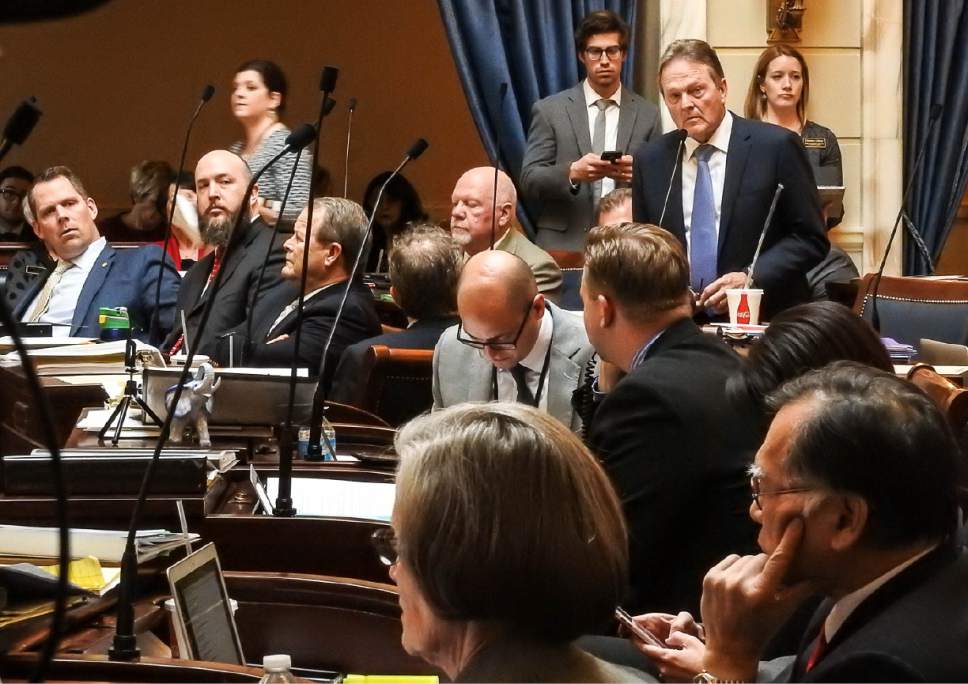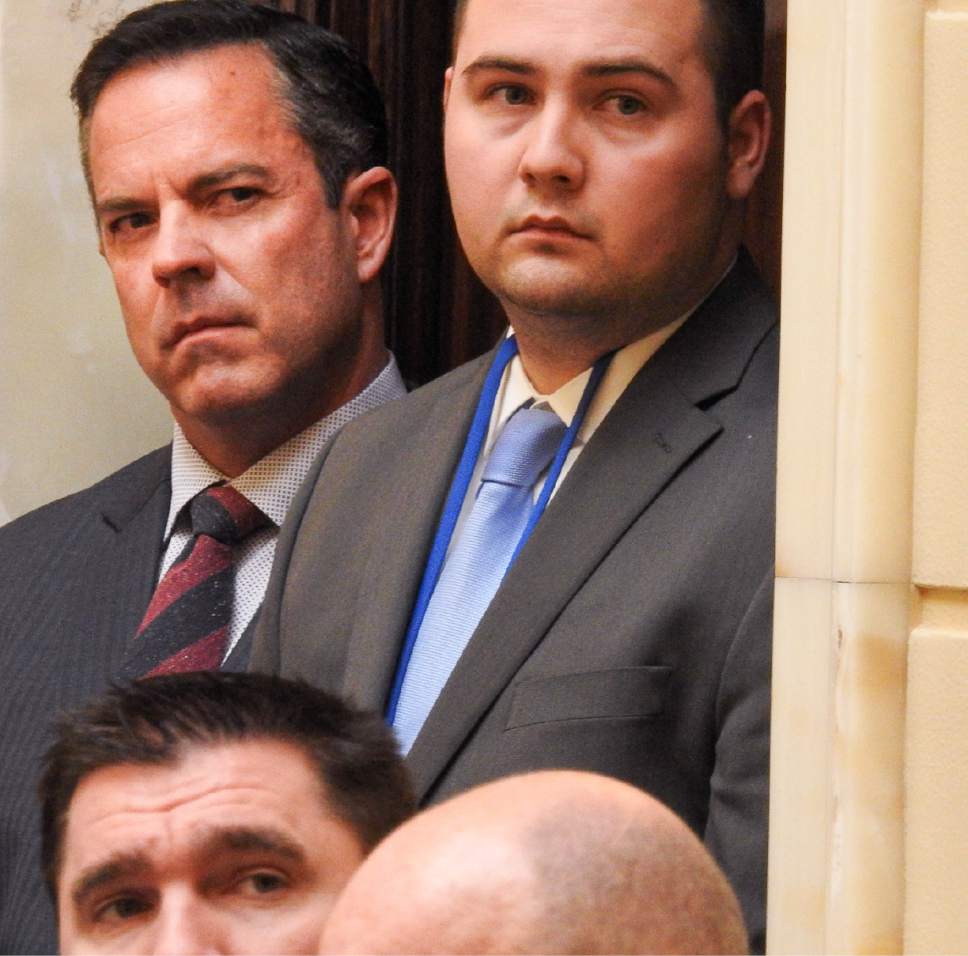This is an archived article that was published on sltrib.com in 2017, and information in the article may be outdated. It is provided only for personal research purposes and may not be reprinted.
A bill making significant changes to Utah liquor laws cleared its last major legislative hurdle Wednesday, which means if the governor signs it as expected, consumers will soon be paying a little more for beer, wine and spirits, and Utah restaurants that serve liquor will have to choose from a new set of requirements separating bar areas from diners.
While some in the restaurant industry had hoped lawmakers would do away with the 7-foot opaque barrier intended to block children from seeing drinks being mixed, the bill instead offers different options. Restaurants can keep the "Zion Curtain"; create a 10-foot buffer from the bar (or edge of dispensing area) where minors are not allowed; or build a half-wall or railing, at least 42 inches high, that creates a delineation between the dining and liquor-dispensing areas.
Restaurants will be able to seat minors in the buffer area as long as they are accompanied by an adult.
All restaurants would have to implement one of the dispensing-area options, even older restaurants that were exempted from the "Zion Curtain" mandate because they were serving alcohol before 2009, when it was enacted.
The Senate approved HB442 on a 20-9 vote with a full day before the end of the legislative session.
"What this bill does is establish parameters under which restaurants can operate and keep children away from alcohol," Sen. Jerry Stevenson, the Senate sponsor, said. "It keeps kids away from the bars and the mixing area and works to prevent overconsumption by patrons."
To further prevent underage drinking, restaurant employees now will have to scan driver licenses to ensure that patrons ordering drinks are 21 or older. Currently, only bars are required to use the scanning devices, he said.
The legislation also does away with dining club and social club designations and creates a single bar license. Owners who now have a dining club license would have until July 1, 2018, to decide if they would switch to being a bar. If the establishment chooses to be a restaurant, owners would have until July 2022 to comply with the barriers and designated dispensing-area rules.
Gov. Gary Herbert expressed support for the legislation while it was still a work in progress.
"Once everything is vetted out, it is going to be positive for the restaurants and the outside perception of our liquor laws," said Michele Corigliano, executive director Salt Lake Area Restaurant Association.
While restaurant and bar owners opposed early versions of the bill, changes were made during the last week that "really address a lot of our concerns," Corigliano said. "We have a lot of time to adapt to the new laws, so in the end it will be beneficial."
Another controversial piece of HB442 dealt with proximity to churches, schools and parks. HB442 allows restaurants serving alcohol to be closer to those community locations — dropping from the current 600 feet distance to 300 feet. However, the provision takes away the ability of the Utah Department of Alcoholic Beverage Control (DABC) to grant variances — or exceptions — to the rule.
Restaurants and bars that now have variances could continue to operate as long as the business remains in continuous operation, even if there is an ownership change.
The bill has other provisions buried within its 144 pages. It would boost the state markup on liquor from 86 percent to 88 percent. The markup on heavy beer sold in liquor stores would go up from 64.5 percent to 66.5 percent. Utah consumers already pay the highest markup on wine — and the sixth highest on spirits — among the country's 17 liquor-control states and one county.
The additional money brought into state coffers will pay for other drinking prevention and training programs in eighth and 10th grades, as well as for owners and managers of bars and restaurants, and employees who are caught selling to underage patrons.
The bill also tightens the restrictions for beer displays in grocery and convenience stores, to prevent confusion between nonalcoholic beverages and flavored beers and ciders, which often have similar labeling.
Two of these alcoholic beverages were passed around in an earlier committee hearing to show the labeling similarities.
Finally, it also changes the makeup of the DABC Advisory Board, dropping the members from 12 to eight and adding more members from alcohol-prevention programs.







